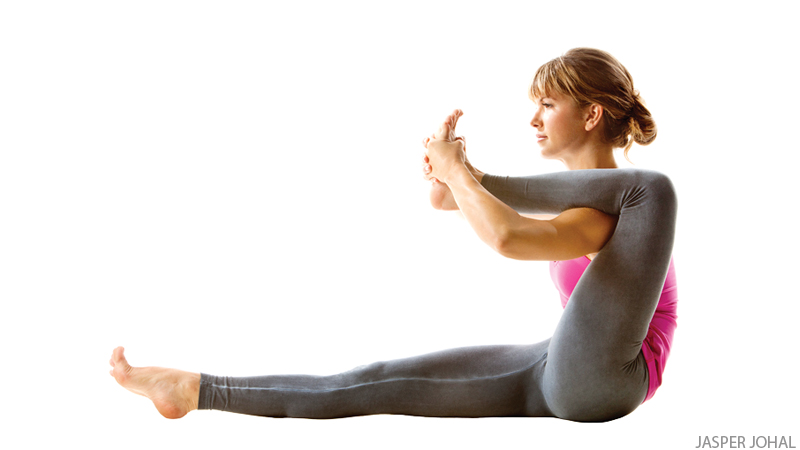
![]()
Patanjali Never Said Anything About Alignment
Originally published on YogaJournal
Anyone who knows me knows I teach alignment—a lot of it. Actually “a lot” doesn’t begin to cover it. I am anatomically focused, and driven to try to understand how the body functions mechanically (as evidenced by my Alignment Cues Decoded series here on YogaJournal.com).
Patanjali never said anything about anatomy or alignment, though. So why bother? I actually have two very specific reasons for teaching alignment and anatomy; one is practical and one is embedded within thephilosophy of the Yoga Sutra.

The Practical Reason for Teaching Alignment in Yoga
When I began my physical yoga asana practice, I had no idea that it was a philosophy that would change my life. I felt something within me was different on my yoga mat than in other sports and activities I’d done, but it took years for me to figure out what. I thought yoga was a physical exercise, a sport, or acrobatics. And until the deeper levels are unlocked, that’s what many people think. And that’s OK! But if that’s the case, as a teacher, I must treat the poses somewhat as a sport, using the kind of wisdom a physical therapist, coach, or trainer would.
Each body is different and has its own individual work and ease. There is no one-size-fits-all alignment and no one-size-fits-all pose. But over time I found I could address all limitations simultaneously in a public class by identifying alignment priorities for students. Then by giving them progressive steps, based on anatomical principles and muscular efforts, toward the peak pose, I allowed them to decide in the moment if the next step was doable in keeping with the priorities. This method gives students a step-by-step path from thesimple to the seemingly unachievable pose. It also limits their risk of injury to the very best of my ability. People will get hurt. They will mistakenly make choices that injure them. I’ve done it myself. But at the end of the day, part of this practice is about learning the difference between discomfort and harmful pain and it’s my job to stop the harmful pain as best I can.

The Philosophical Reasons for Teaching Asana Alignment
The first sutra—yoga is now—is what changed my life and is what I see transform my students lives too. But it is difficult to be here now, clearly and wisely, to shed attachment to perpetually harmful patterns of behavior and thought, and to become kinder and more at ease with yourself and the world.
To live by this philosophy, we need to find a tool and then to use that tool—over and over and over. That repeated use, or practice, will lead to progress. The tool most of us begin with and continue with is asana.
The Sutra really only mentions asana to say that what qualifies as asana is a balance of effort and ease, or steadiness and release, a pairing of opposites. That’s it. Patanjali doesn’t say anything about Warrior II, orTriangle, or Handstand, or how those poses are to be aligned. If that’s the case, then how does this asana thing we all teach and practice qualify as yoga?

The Yoga Sutra That Informs Asana Instruction
Sutra 2.1 has informed how and why I teach the way I do from day one:
Tapah Svadyaya Isvarapranadhnani Kriya Yoga.
I translate that sutra as something like:
Choose to do difficult work—often the opposite of your initial impulse—that you know will get you to a better place; pay attention to whether the work is beneficial or if it’s injurious and make wise choices toward the former; surrender to the process, knowing that the work leads to a life of less suffering and more ease.
My teacher taught me that these principles can not only inform the teaching of asana but also make it acomplete yoga practice without needing to add esoteric things that I wasn’t ready to discuss in a clear and simple way yet……
To keep reading visit YogaJournal





